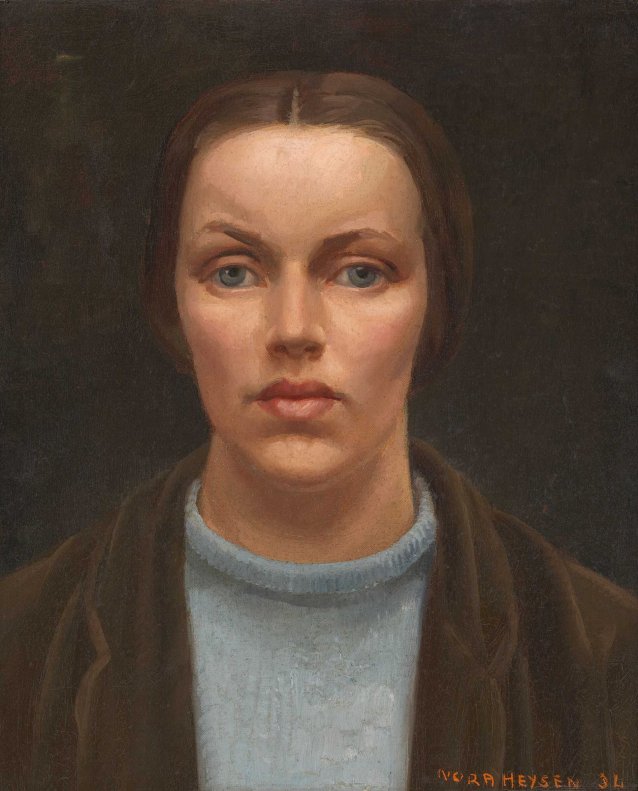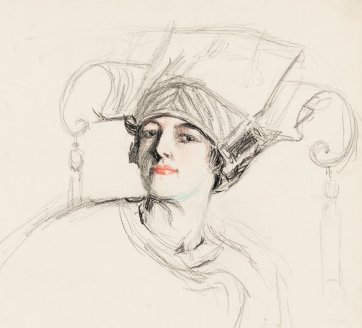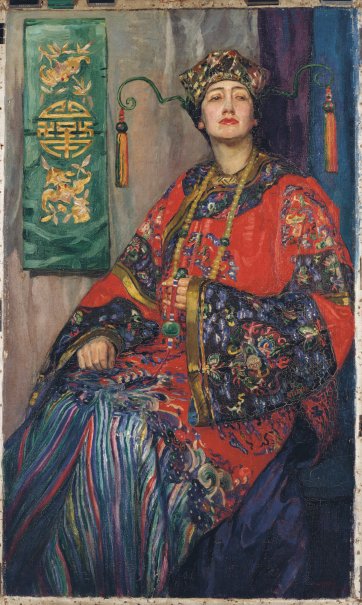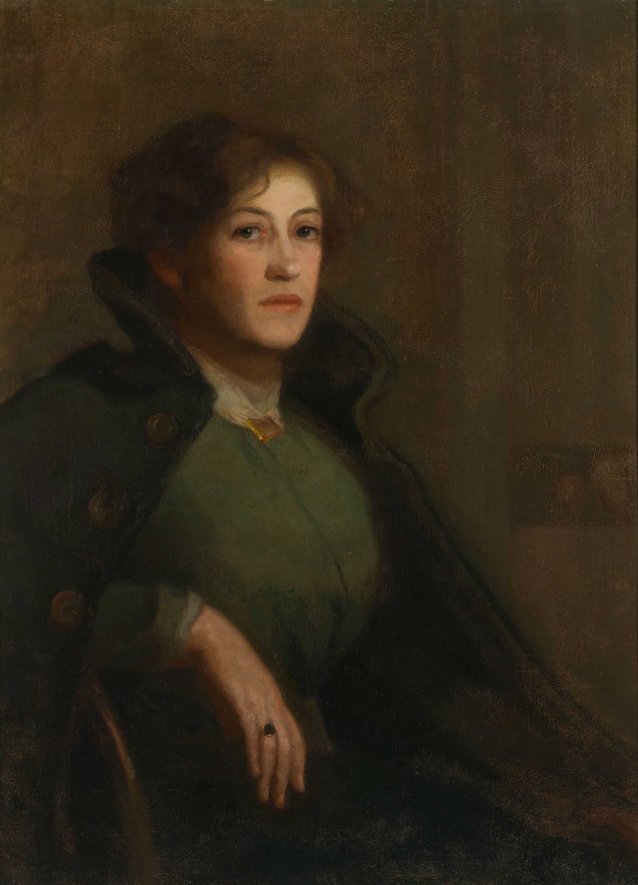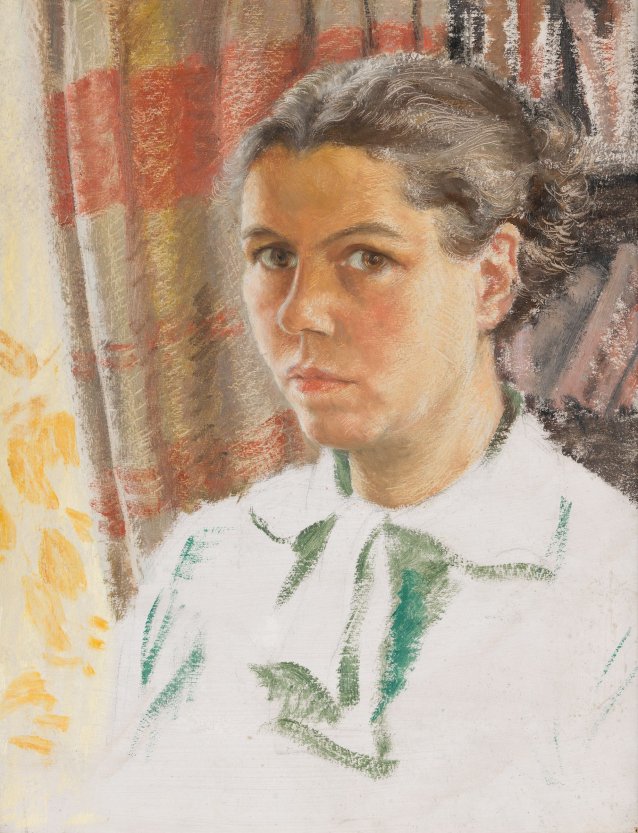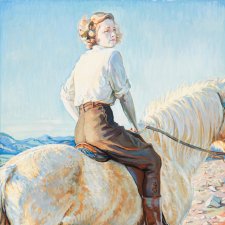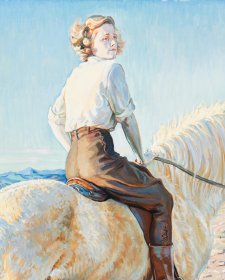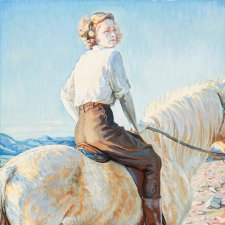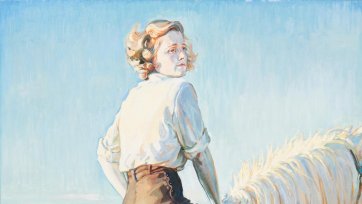Emily Hilda Rix Nicholas (1884–1961) left Australia for London at age 22, in 1907, having trained for three years at the National Gallery School in Melbourne. Moving on to Paris – accompanied by her widowed mother Elizabeth and sister Elsie – she attended art classes at the Académie Delécluse and the Grande Chaumière. Between 1910 and 1914, Hilda, drawing and painting prolifically, spent time in Morocco and the artist colony in Etaples, on the French north coast. She was still accompanied by her family, but tragedy struck after the trio returned to London in 1914 (having fled Paris to escape the onset of the First World War), with Elizabeth and Elsie dying in rapid succession from typhoid fever. Hilda later met and married Major George Matson Nicholas, an Australian soldier (in 1916), but just a few weeks later he, too, died – killed in action at Flers, France.
Hilda moved back to Australia, settling in Mosman, Sydney. In 1928 she began a new life as the wife of Edgar Wright, owner of the property ‘Knockalong’, near the town of Delegate on the Southern Monaro. She continued to paint, and to exhibit sporadically in Sydney and Melbourne, until the mid-1940s.
In Paris in 1913, Hilda painted Elsie in a lavish Chinese robe, with the resulting work, La robe Chinoise, now in the Art Gallery of Western Australia’s collection. The Chinese robe was a regular accoutrement for the artist; she appears in photographs in it, wore it to fancy dress events, and drew herself in its accompanying headdress. The latter work, Hilda in the Chinoise hat, demonstrates the artist’s passion for costume. I’ve included it in my top five, as I’m taken by its understated sense of confidence, underscored by her prominent lips – in the centre of the work – bearing the work’s most substantial splash of colour. Again, there is that self-assurance and self-awareness, at all of 30 years of age. The drawing was a gift of the artist’s granddaughter, Bronwyn Wright, following the 2013 NPG exhibition Paris to Monaro: Pleasures from the studio of Hilda Rix Nicholas, in which it featured.
